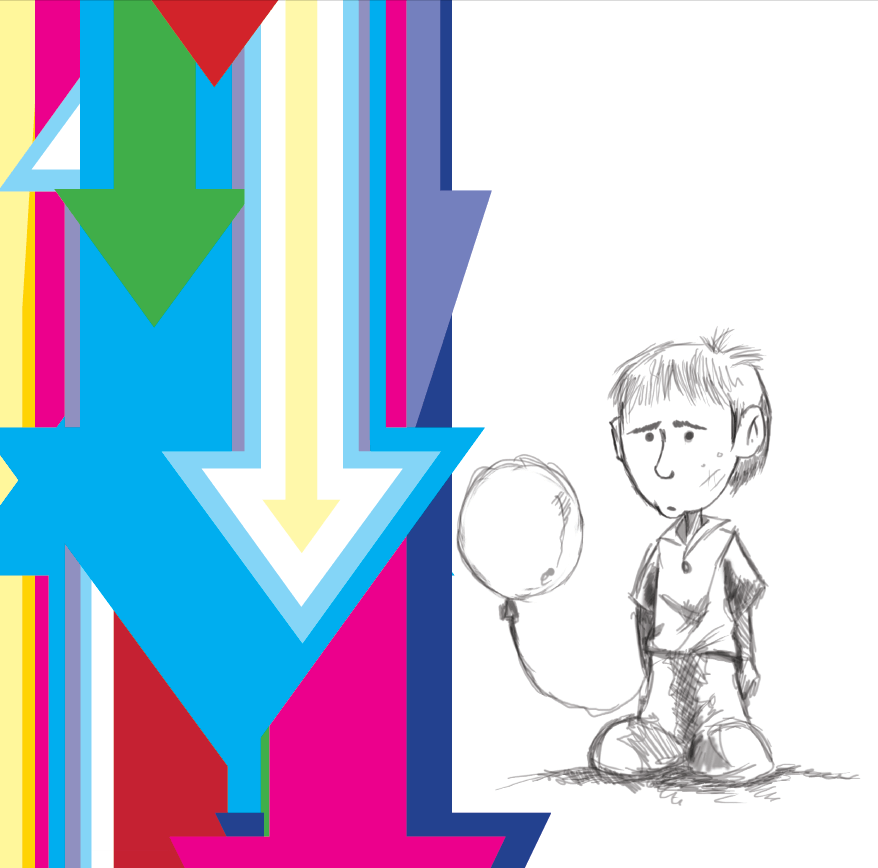Origins of Financial Crises
The Con Of Inflation
By Charles Dreezer, Contributor
Design by: Ryan Trinidad, Art Director
(First published in the Arbitrage Magazine Issue 4)
Business Cycle, Business Shmycle
Where do financial crises come from? You know, those events that pull the world into a recession and, just maybe, pull you out of your job? Why do they happen? What turns a recession into a depression?
The Austrian School of economics, which today has little to do with Austria, can offer us some insight. A key tenet of the Austrian argument is that central banks and their misguided monetary policy are largely at fault.
The Austrian Business Cycle Theory (ABCT), which is mostly ignored by mainstream economics, holds that ineffective monetary policy tends to set interest rates too low for too long. This invariably leads to excessive credit creation, speculative bubbles, and unsustainably low savings and high consumption.
To illustrate, let us begin with a simple example. Low interest rates tend to stimulate borrowing from the banking system. Increased borrowing means an expansion of credit, which is really an expansion of the money supply. An abundance of cheap money leads to an unsustainable credit-fuelled boom in which artificially stimulated lending seeks out diminishing investment opportunities. Eventually, there are so few reasonable investments left that capital resources are misallocated into areas that would not attract investment if the money supply remained constant.
A recession then occurs when the central bankers wise up to the over-inflated asset prices and are forced to increase interest rates in order to stop the credit creation. The ensuing period is characterized by debt default, a rush to divest from projects that are not feasible at the new higher interest rates, and a corresponding contraction of the money supply (i.e. deflation).
At this point, central bankers become concerned that the economy will funnel into a downward spiral (DS) when low demand leads to downsizing and bankruptcy, which lead to job loss. Job loss further decreases consumption, which in turn leads to more downsizing and more bankruptcy. For fear of the DS, interest rates are dropped.
Rinse and repeat.
Now let’s apply this model to the current financial crisis. The dot-com bubble exploded at the beginning of the new millennium. Between 2000 and 2003, Alan Greenspan, then Chairman of the US Federal Reserve (Fed), lowered the Federal funds rate target from 6.5% to an all-time low of 1%. As expected, low interest rates decreased savings and increased consumption, fending off the risk of the DS. Easily obtained credit and money that would previously have flocked toward dot-com companies now focused on the real estate sector as a ‘safe investment alternative’.
So what happened?
As outlined, attractive investment opportunities diminished, still free-flowing credit was used to finance the bidding up of asset prices, as well as other increasingly unattractive and risky investments. Eventually, the Fed realized that this was going on and, as predicted by the ABCT, raised the interest rate from a low of 1% to 5.25% about two years later.
Loan defaults triggered a wave of destruction in the financial sector as complex derivatives and the institutions that held them took a nosedive. In true form, the Fed lowered interest rates again for fear that a DS would cause a systematic failure of the financial system.
Who wants to take bets on a repeat?
Remember that thing called the free market?
F. A. Hayek, one of the early influential Austrian economists, reminds us that a recession can be good for us. “Enterprises are gambles that sometimes fail: a future comes to pass in which certain investments should not have been made. The best that can be done in such circumstances is to shut down those production processes that turned out to have been based on assumptions about future demands that did not come to pass. The liquidation of such investments and businesses releases factors of production from unprofitable uses; they can then be redeployed in other sectors of the technologically dynamic economy. Without the initial liquidation the redeployment cannot take place. Depressions are this process of liquidation and preparation for the redeployment of resources.”
The ABCT explains the Fed’s (and most of the workd’s) monetary shenanigans as a shortsighted attempt to smooth out the business cycle. Unfortunately, among its true effects are misallocation of resources and prevention of the recession, which is the free market mechanism that would purge the economy of improperly employed resources. Why, then, does the Fed use such practices when it seems obvious that they are in fact intensifying the business cycle rather than easing it?
Let’s take a closer look at the subject of inflation to find out.
































Share the post "Origins of Financial Crises"